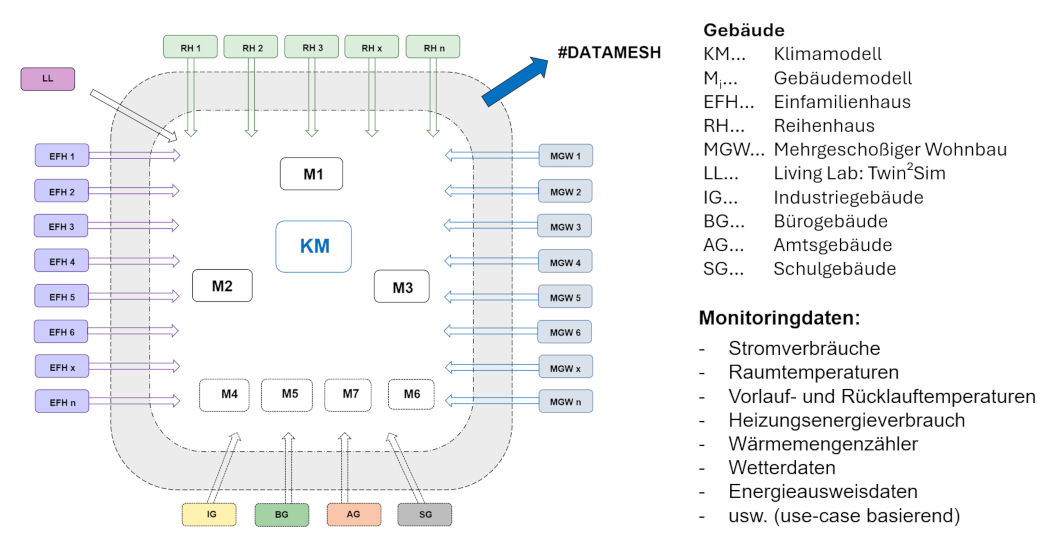MokiG: Monitoring for climate-neutral buildings
Short Description
Starting point / motivation
It is currently very time-consuming to obtain an up-to-date overview of a building's energy consumption and CO2 emissions. This is of great importance for achieving climate-neutral buildings. In addition, energy consumption is often only billed annually and depends heavily on the respective outside temperature, solar radiation, system and user behaviour.
Furthermore, an annual comparison can make it difficult to identify a heating system that is fundamentally poorly adjusted, inefficient user behaviour or a system defect. A comparison with the current and planned CO2 emission targets is usually completely missing. In modern building technology systems, especially in larger buildings, monitoring is increasingly carried out by the system operator.
The focus is on monitoring the system to ensure smooth operation and rarely on energy efficiency or CO2 emissions. In addition, the data is stored in so-called 'data silos' and comprehensive digital processing is therefore not possible.
The motivation is to use suitable methods to identify the current gap between buildings and climate neutrality to involve operators and residents in the emissions reduction process to achieve climate-neutral buildings. In addition, a reduction in building emissions is necessary for the implementation of the new EU Buildings Directive (EPBD) and therefore comprehensive monitoring is essential.
Contents and goals
The main objective of the research project is the monitoring of emissions and the presentation of potential savings for achieving climate neutrality in buildings.
A key objective in the implementation is to utilise measurement data already available from building technology, ZEUS energy accounting and the energy performance certificate without installing additional and expensive measurement technology.
Methods
The use of innovative Datamesh technology helps to check the plausibility of the data from the various sources and to organise it. A data room is created from the aggregated data, which serves as the basis for a digital twin. With the help of AI approaches and digital twins, the influences of environmental conditions, user behaviour and building characteristics can be included in the analyses.
Expected results
With the help of the digital twin, much more precise statements can be made in real time and suggestions for energy-saving improvements can be generated automatically. Another advantage is that building owners, property managers and residents can be actively involved in the process of energy saving and sustainability via dashboards.
Project Partners
Project management
Fachhochschule Salzburg GmbH
Project or cooperation partners
- Energy consulting business GmbH ECB
- Meshmakers GmbH
- Unbuzz Consulting
- RGK e.U.
Contact Address
DI Dr. Klaus Prenninger
Markt 136a
A-5431 Kuchl
Tel.: +43 (50) 2211-2712
E-mail: klaus.prenninger@fh-salzburg.ac.at
Web: www.fh-salzburg.ac.at

